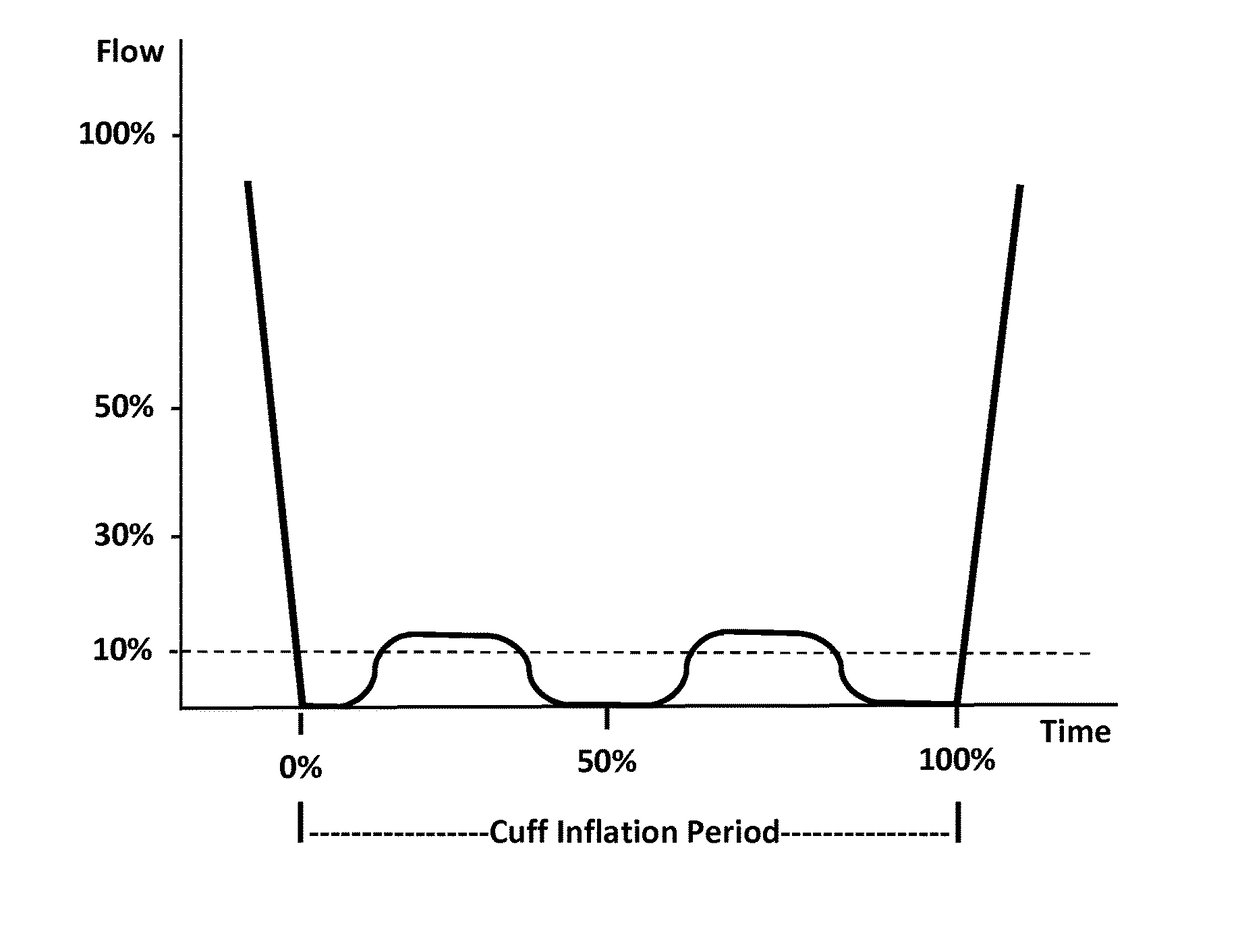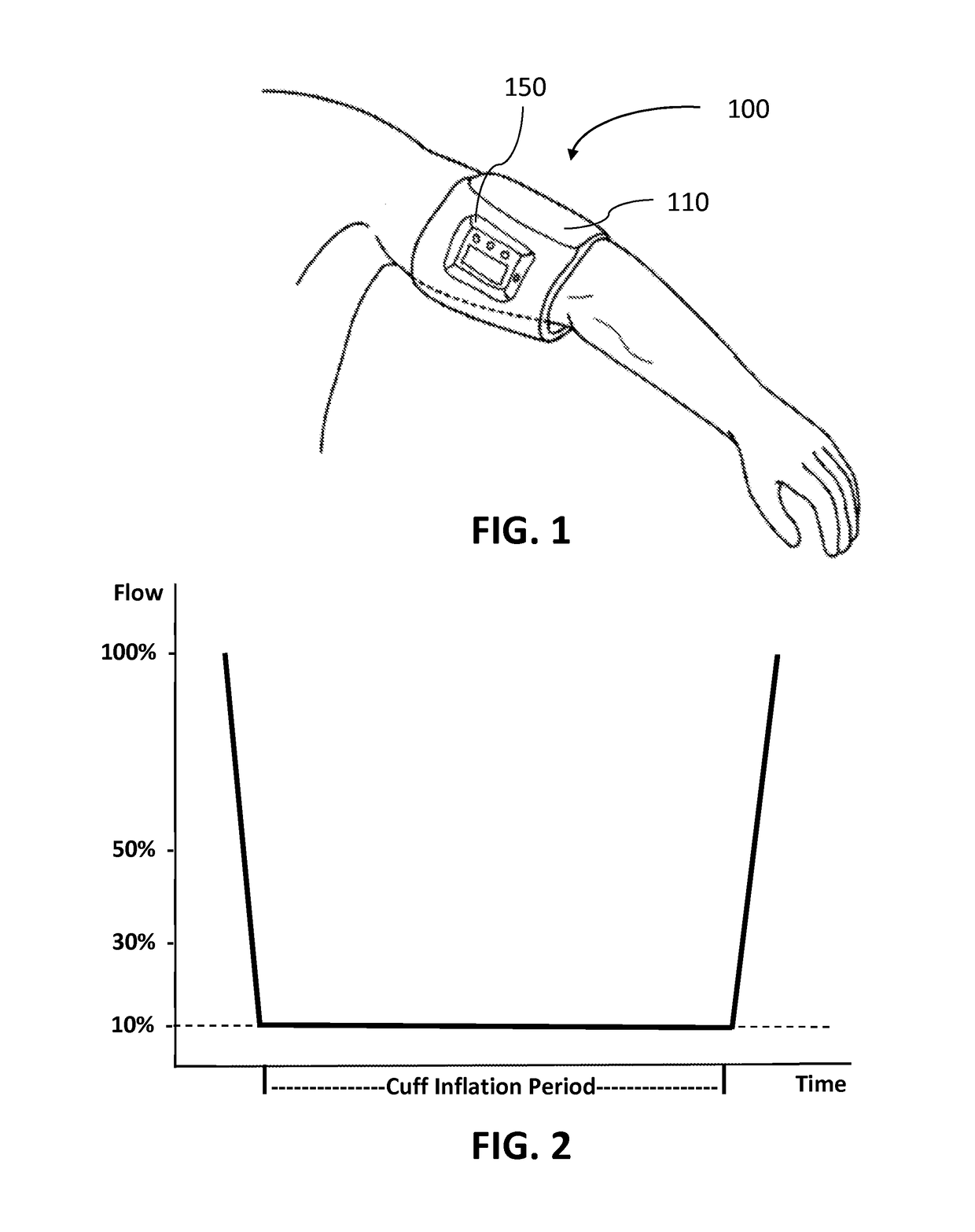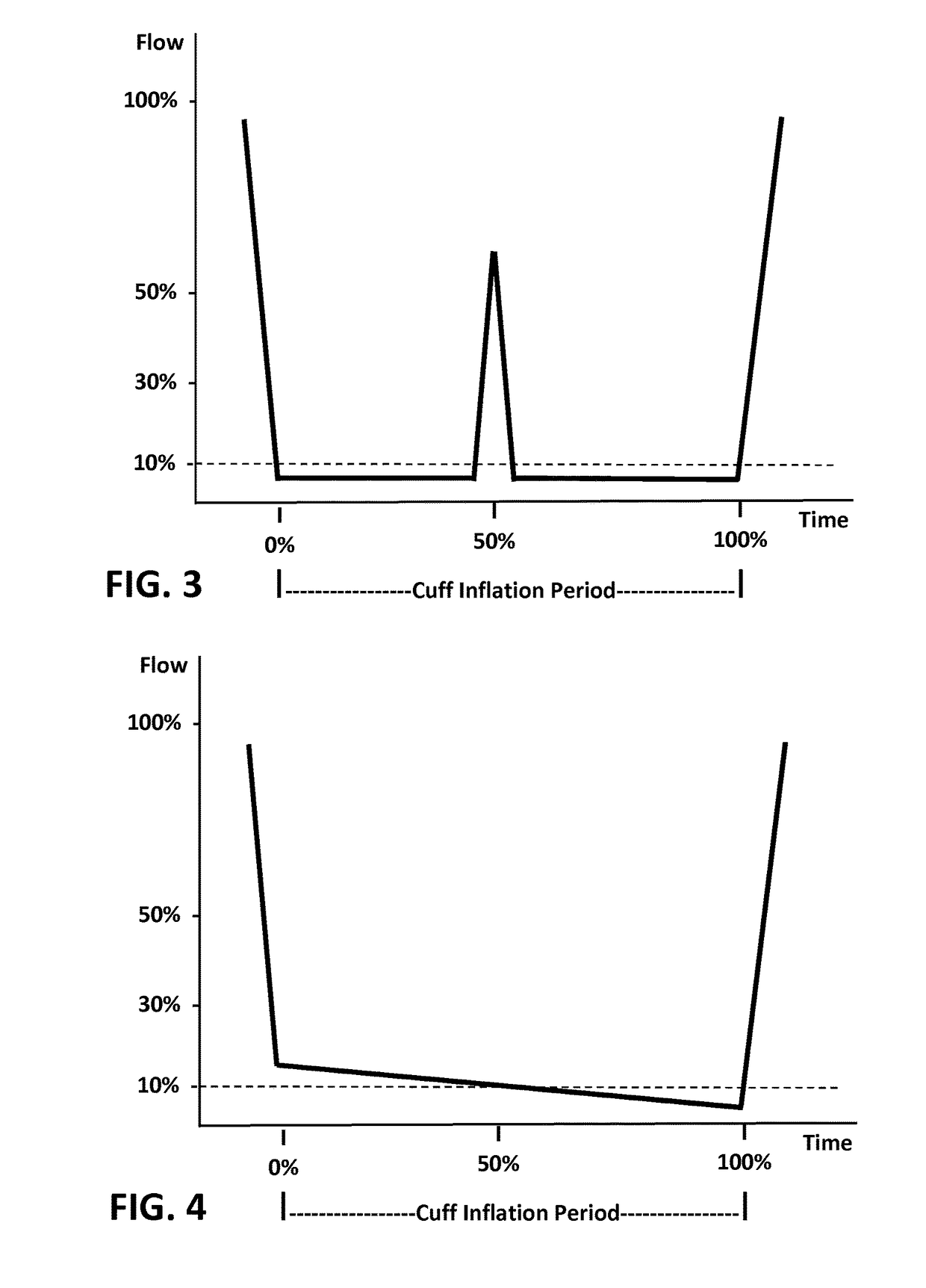Methods and devices for remote ischemic conditioning via partial limb occlusion
a technology of partial limb occlusion and ischemic conditioning, which is applied in the field of remote ischemic conditioning treatment, can solve the problems of increasing the risk of thromboembolism, affecting the treatment effect, and causing pain and discomfort to the subject, so as to minimize the pain and discomfort of the subject
- Summary
- Abstract
- Description
- Claims
- Application Information
AI Technical Summary
Benefits of technology
Problems solved by technology
Method used
Image
Examples
Embodiment Construction
[0041]FIG. 1 shows a general illustration of the device 100 including a cuff 110 and a controller 150, which may be attached to (removably or permanently) or otherwise operably connected to the cuff 110. The controller may have an internal microprocessor which may be programmed or otherwise configured to inflate the cuff according to a predetermined protocol of delivery of remote ischemic conditioning treatment.
[0042]During operation of the controller, the cuff may be inflated or deflated to certain levels of cuff pressure corresponding with certain levels of limb occlusion. The present description includes at least the following distinct states of cuff inflation and corresponding cuff pressures, listed here in the general order from low pressure to high pressure:[0043]a. Full cuff deflation—no restriction in limb blood flow under the cuff, cuff pressure is at atmospheric level or below;[0044]b. Retain-on-limb cuff state—low level of cuff inflation is applied, only enough to retain ...
PUM
 Login to View More
Login to View More Abstract
Description
Claims
Application Information
 Login to View More
Login to View More - R&D
- Intellectual Property
- Life Sciences
- Materials
- Tech Scout
- Unparalleled Data Quality
- Higher Quality Content
- 60% Fewer Hallucinations
Browse by: Latest US Patents, China's latest patents, Technical Efficacy Thesaurus, Application Domain, Technology Topic, Popular Technical Reports.
© 2025 PatSnap. All rights reserved.Legal|Privacy policy|Modern Slavery Act Transparency Statement|Sitemap|About US| Contact US: help@patsnap.com



